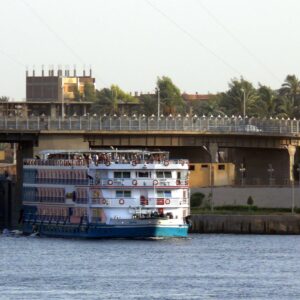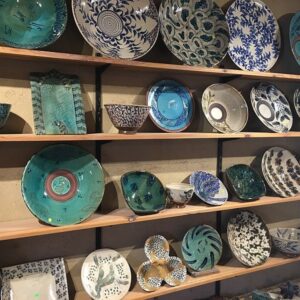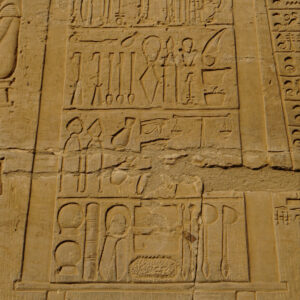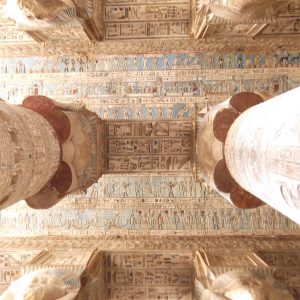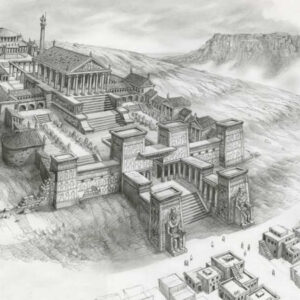The temple of Madinat Habu
The Madinat Habu is the place where king Ramesses III decided to build his funerary temple. It is located on the western bank of the Nile River in Luxor city.
We know from inscriptions at sandstone quarries in Jabal Al-Silsila (north of Kom Ombo) that King Ramesses III ordered 300 workers to cut stones for constructed Habu temple from this quarry.
The design of Habu temple 1 – There is a massive wall surrounding the temple complex. This wall has an unusual gate called the pavilion gate. This gate distinguishes with its unique style, as it takes the style of the Syrian migdol fortresses. On this gate, there are depictions showing king Ramesses III in his wars in Syria.

2 – After passing through the open court, you will reach the pylon of the temple. Also, on the pylon, there are scenes for king Ramesses III in battles, as he appears smiting his enemies in front of the ancient Egyptian gods.
On the back of one of the two towers of the pylon, the king is depicted while he was in his journey and hunted the oxen.
3 – Then you will enter the first open court. The walls of this court are decorated with scenes depicting the wars against Syria and Libya.

4 – Then the second open court. It houses scenes depicting religious feasts, as the feasts of the gods Sokker (the god of the underworld) and the god Min (the god of fertility). In these festivals, the king appears giving offerings to the ancient Egyptian gods. Later in the Christian times, this court was transferred to be a church.

5 – The first Hypostyle: there was an earthquake that occurred in 27 B.C. that caused damage to this court. This court is surrounded by 16 shrines.
- The first shrine is dedicated to King Ramesses III.
- The second shrine is dedicated to the god Ptah.
- The fourth shrine is dedicated to the boat of the god Sokker.
- The seventh shrine is dedicated to the sacred boat of the god Amon Ra.
- The fourteenth shrine is dedicated to the sacred boat of King Ramesses II.
- The fifteenth shrine is dedicated to the divine boat of the god Montho.
- While the other shrines are used as a store for the temple supplies.
The second and the third Hypostyle halls are similar, as they contain 8 papyrus columns in 2 rows.
At the end of the third hypostyle hall, there is the holy of the holies of the temple, as there are three gates leads to the main god of Thebes (Amon Ra – Mut – Khonso).







